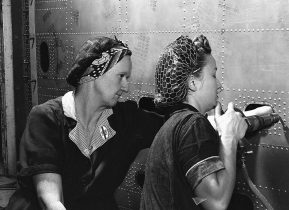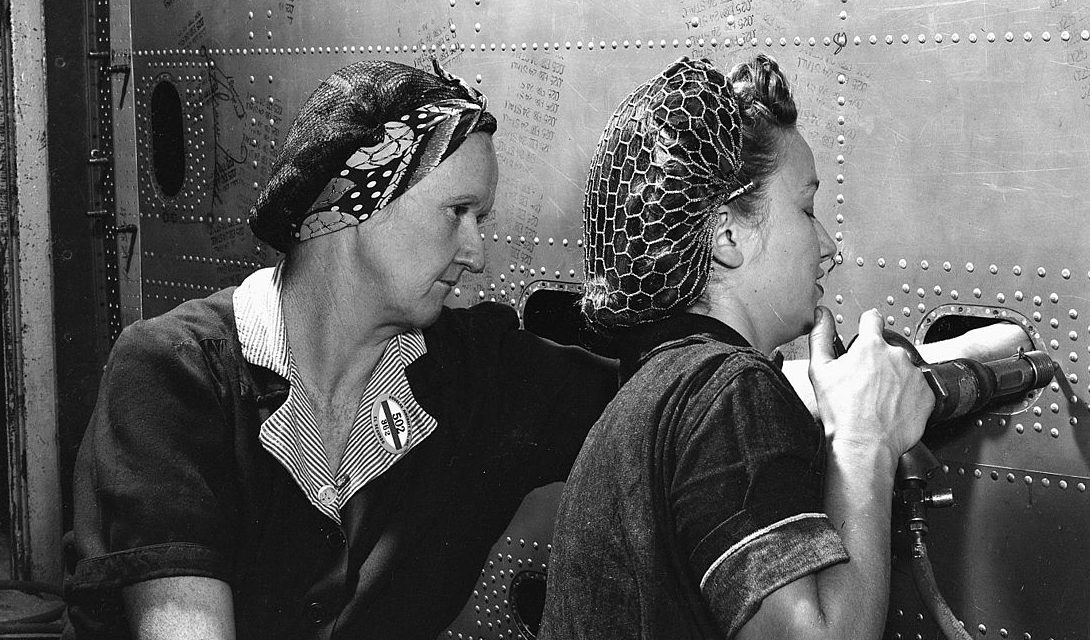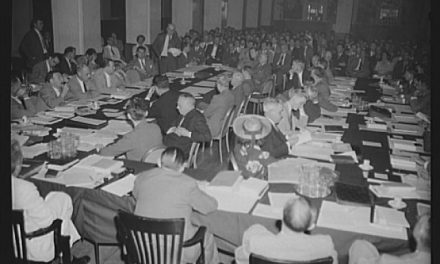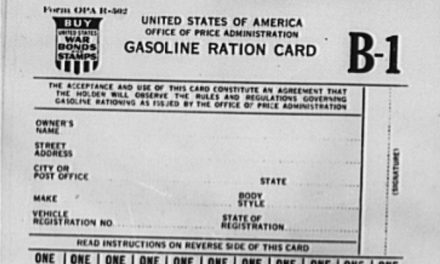In the aftermath of Pearl Harbor and the declaration of war, many people felt the urge to support the war effort. One Bronx woman, Mary Kaminsky, decided to do just that by applying to work at a General Motors automotive factory in Linden, N.J. The factory, now used for U.S. military plane production, hired 18-year-old Kaminsky as a riveter for fighter planes.
The work of a riveter is intensive and dangerous, but that doesn’t stop Kaminsky from making the two-and-a-half-hour commute to Linden, N.J. Accompanied by her older sister, Kaminsky travels by trolley from the Bronx to the train, the train to New Jersey, then a taxi to the factory.
Raised by Ukrainian immigrants, Kaminsky grew up with four siblings in a small apartment in the Bronx. The neighborhood was a mixture of Jewish, Italian, and Irish. The Kaminskys were Orthodox Jews but never felt anti-Semitism. Kaminsky’s father worked as a bagel maker in a Bronx basement, where he’d boil and bake them.
Growing up with a large family meant Kaminsky’s job as a riveter wasn’t her first. At 8 years old, she plucked fresh, kosher chickens for three cents a chicken. At 14, she was babysitting children in Long Island. Neither prepared her for the work she would face as a riveter.
“I was looking at ads in the paper to see what kind of work I can do,” Kaminsky said. “[I] saw an ad in the paper about working on aircraft fighter planes.” She said she didn’t realize how much stress the work would cause, but it didn’t bother her.
Riveting is a competitive position that involves using long drills on the aileron of an airplane wing. On her first day, Kaminsky said she was shown what to do and told of the necessity of being cautious with the drill, since there has to be one clear hole to put the rivet into. During her first week, she was supervised by inspectors until they were confident in her ability to do it correctly.

Women riveters working on a wing panel of a Douglas SBD Dauntless fighter plane. From Wikimedia Commons.
“I was the fastest on my shift… We were always trying to outdo each other,” she said on the atmosphere with her coworkers. “It didn’t matter as far as the money. We just wanted to get these planes out. [It’s] a very patriotic feeling.”
It’s hard to argue that Kaminsky isn’t dedicated. She’s never taken time off, even when sick. It is challenging work, but as she said, “I think the competition [makes] you fight harder.” She said all of her co-workers, like her, were bitter and hurt after the attack on Pearl Harbor, which inspired more drive and ambition.
Women make up 25 percent of the workforce for New Jersey General Motors, and supervisors report that many women work as fast as the men. However, even with similar output, that couldn’t erase the change in fashion Kaminsky had to adhere to.
As a precaution for working around machinery, women are encouraged to wear pants. Kaminsky said she’s often stared at when commuting to work because of her clothes. She prefers to wear pants to work, even if it bothers other people.
“[We] could wear something else, but it [is] so much easier to bend down and pick up the drills… than if [we] wore a dress,” she said. It comes down to a matter of safety for those working with the equipment. “You don’t want the dress to be caught into the drill or into the machinery, because then you could have a real problem.”
Dresses aren’t the only thing that could get caught in the machines. Women with long hair are required to keep it covered, often with hair nets. Supervisors often warn workers to cover their hair or risk ending up in a hospital, according to Kaminsky.
“They resented it,” she said of some female co-workers. “They covered it while the supervisor was watching, and then take it off again.”
Setting those issues aside, female riveters are playing a major role in war production. One of the most satisfying moments for them is when they get to watch finished planes be tested. During a break between shifts, riveters sometimes gather outside to applaud as planes take off for their test flights. Supervisors often bring in cakes or lollipops to celebrate the completed production.
“They’re just beautiful to watch,” Kaminsky said. “We just [get] the fun out of knowing that we [are] doing something to help the war effort.”
Source:
Mary K. Cohen oral history interview. “Rosie the Riveter WWII Home Front Oral History Project.” Interview conducted by David Dunham in 2011. Regional Oral History Office, The Bancroft Library, University of California, Berkeley, 2012. http://vm154.lib.berkeley.edu:3002/searchinterview/fullDisplay?data=129748, accessed on December 17, 2016.





